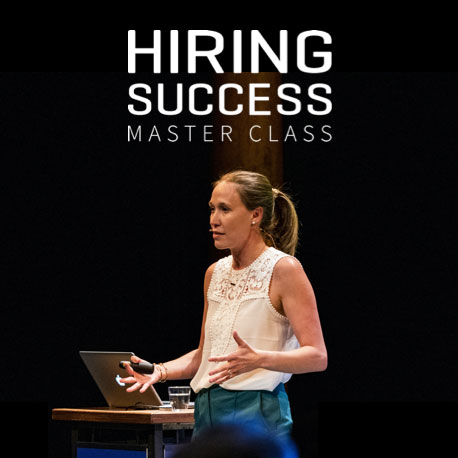Marketing is not importantly different from employer branding. Both require the promotion of a unique identity, and they ask you to attract greater buy-in year over year. Recruiters can help market an employer brand without being marketers themselves. When they do, recruiting can boost candidate applications and acceptance rates by following five basic steps.
1. Creating resonance
Creating resonance means that you are targeting your ideal talent pool with relevant content, custom appeals, and relationship-building efforts.
“Letting go” of branding
While marketers and recruiters value the brand employers have painstakingly built, “letting go” of your brand can be just as important for applicants. Letting go requires that you focus on the applicant audience, appealing to their interests, passions, and goals for employment.

For example, a brand could ask a group of developers whether they were interested in working for a great, service-oriented bank. Few developers might raise their hands. Conversely, asking whether they were interested in working on a platform with 70,000 daily users might lead their interest to spike. Notice the shift in focus that demands you relax emphasis on your brand and instead highlight attributes that appeal to the talent in the room.
Creating relevant content
The second aspect of creating resonance with your target talent group involves creating resources for them to learn and explore. That means content. The kind of content you create should be based on your talent’s unique persona. Ask yourself what motivates them to go into work every day, what drives them toward competing employers, and ultimately what deeper needs they can serve with your company.
To take another example, talent might express that they are looking for an employer who meets basic needs. These include “better pay,” “benefits,” “flexible scheduling,” etc. Talent acquisition must look deeper and interrogate these statements to find the true needs being served. For instance, an applicant seeking better pay may be motivated by a desire to help pay for their child’s college education or to secure their continuous learning. Brands can then appeal to these deeper needs while making content.
Appealing to relationships
Finally, while you create resonance with talent, you can appeal to your relationship with applicants by showing them basic attention. Listening to your candidates is the first step toward building this relationship. It encourages talent to know that their needs and requests are noticed.

Secondly, recruiters can practice reciprocity while interfacing with candidates by sharing information. This allows candidates to find common interests between themselves, you, and the client you represent. You shouldn’t be afraid to share information about yourself or insight about your client for the sake of building a relationship.
Finally, recruiting acquisition can increase trust in relationships with talent by communicating clearly and often. Recruiters are busy people, but with the right, personalized communication, they can build relationships with candidates that other recruiters will miss.
2. Prototyping experiences
The candidate experience will determine whether your recruiting efforts to increase applications and acceptance rates will gain traction and momentum. Being strategic about this phase of development is best completed using an agile framework.
Working agile
Recruiting, like marketing, requires constant planning and learning. While you may not be building a product while working with an employer brand, you can still set out a strategic vision for the candidate experience. That includes being clear about your target candidate, what they need, and the key benefits your employer brand brings to them in comparison to competing brands.

Also, building a roadmap to that perfect candidate experience is what will set you apart from less focused or strategic marketers and recruiters. Focusing on goals, objectives, and outcomes like increasing applications and acceptance rates is a good start. You can also limit your goals by giving them a date of accomplishment, setting up metrics to follow your progress, and stating the goal simply yet specifically.
Finally, you will design your development of candidate experiences in “sprints.” These are one- to four-week cycles that enable you to carry out specific tasks while being able to respond to change quickly and regularly. Each sprint is followed by a short, sweet review session that analyzes where you are concerning your goals and how you can move closer to achieving them.
3. Designing success
Every client has a wealth of resources at their disposal for learning about and creating resonance with future hires. As a recruiter marketing an employer brand, it becomes your role to maximize these resources by bringing existing talent on board to create resonance and success.
Leveraging current talent
If you are hiring for multiple developer positions within your company, and your efforts are focused on creating a great candidate experience, then one of the best methods you can use is your very own internal talent. These peers know your company, its values, and its stake in their livelihood. So, use these to your advantage by including them in the agile process of marketing for talent acquisition.
4. Creating campaigns
There are many ways that marketers structure campaigns and make impressions on their target audience. As a recruiter, it is often best to rely on simple and straightforward approaches to creating and executing campaigns. For example, you can divide your process into three sessions such as a See phase, Think phase, and Do phase.

See phase
The see phase describes when your candidate first sees the employer brand. At this stage, your focus should be on driving awareness to inform and inspire your candidates to interact with your employer brand. Your candidates should see something in your campaigns that resonates with them and their view of the world. Some channels you might use at this phase include social, video, content, and landing pages.
Think phase
The think phase is more active. In this stage of the marketing cycle, you are taking awareness and creating interest to educate, inform, and inspire your target talent. You also demonstrate the advantages of your employer brand as a potential place of work. Users should start thinking that they should learn more about whether the employer is right for their needs. This phase often involves email and retargeting.
Do phase
The do phase is about cultivating buy-in. You should be driving conversion with a lot of direct, clear, and commercial intent. Your target audience of talent should know what to do by taking concrete action to connect and express interest in your employer brand. The Do Phase in the marketing cycle also includes retargeting and email as well as PPC ads.
5. Analyzing results
If you have been careful in your research about your target talent, created an agile strategy for meeting your talent acquisition goals, and launched campaigns in clear, methodical phases, then you are ready to start analyzing the results of your employer brand marketing efforts. This itself requires a careful, thoughtful approach that you can master in four phases.
Understanding what worked
After your campaign is done, provide yourself with an overview of your campaign’s strategy and objectives. Be crystal clear about what you were looking to achieve for your employer brand. Then, compare those objectives with actual performance. Answer basic questions like “Did the campaigns achieve growth in applications and acceptance rates?,” and “To what extent were these campaigns effective or ineffective?”

Articulating your approach
You will find it useful after answering the above questions to articulate exactly what your approach was after all your agile sprints and adjustments are said and done. Here, you can provide a snapshot or timeline of the activities you completed so that your stakeholders can see what was delivered through the campaign alongside overall effectiveness.
Breaking down results
This is the meat of your review. You want to focus on the channels that were represented in your campaign compared to their specific objectives and metrics. For example, if you used mainly social and search for your campaigns, you will want to include the cost per view of your posts as well as click-through rates for your ads. Whatever KPIs you used during your campaigns should be reviewed at this stage.
Making future recommendations
After you have reviewed the specific successes of your talent marketing efforts, you can compare the results to your plan as well as approach. Ask where the data points you. You may see that the channels you used could have been more numerous or more focused. In any case, you want to highlight the elements of your campaign that require further testing and refining.
Final thoughts
To effectively market your employer brand to specific talent pools, understand and apply these five steps. They require you to think strategically about how you will resonate with and reach your ideal candidates while wowing them with an experience that increases acceptance rates. At every step, you should be thinking from a candidate-centric perspective, working agile, and “letting go” of your brand.

 Enroll in the Master Class & earn 6 SHRM credits
Enroll in the Master Class & earn 6 SHRM credits